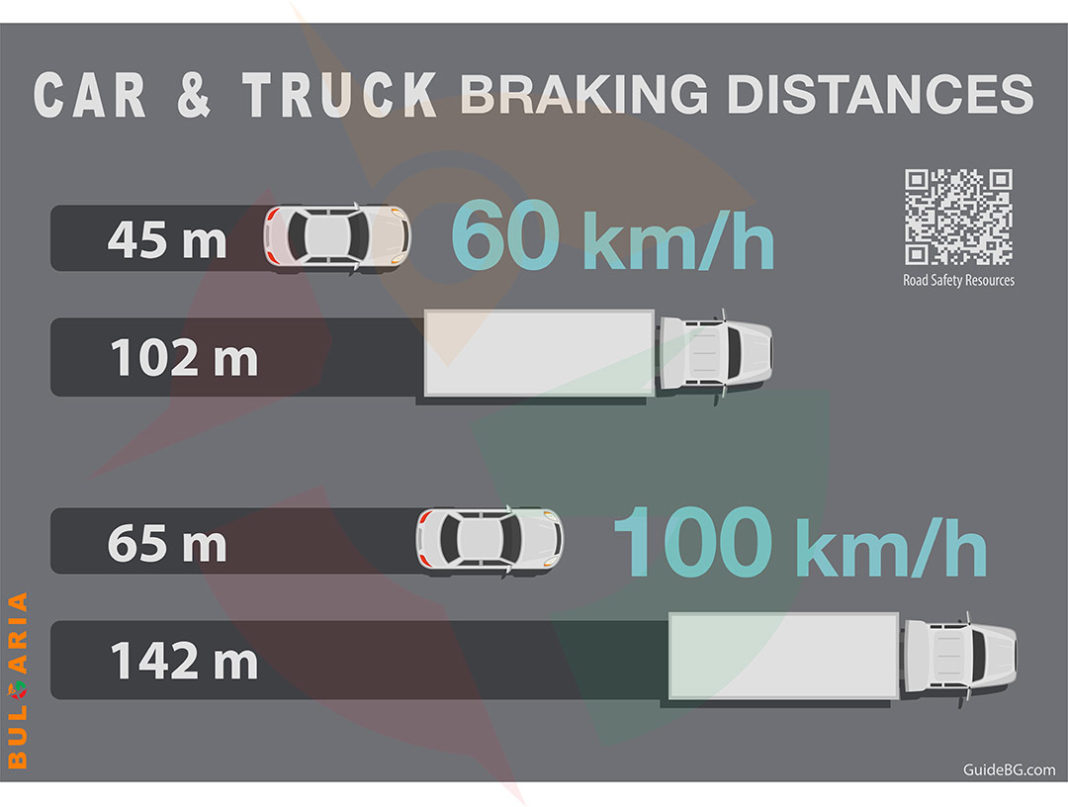Why Braking Distance Matters
Braking distance is the distance your vehicle travels after you apply the brakes until it comes to a complete stop. Combined with the thinking distance—how far your car travels while you react—it forms the total stopping distance. Understanding these distances helps drivers maintain safer following distances and prevent accidents.
Braking Distances on Dry Roads
Here are average braking distances for cars and trucks under dry, normal road conditions:
| Vehicle | Speed | Thinking Distance | Braking Distance | Total Stopping Distance |
|---|---|---|---|---|
| Car | 60 km/h | 25 m | 20 m | 45 m |
| Car | 100 km/h | 42 m | 60 m | 102 m |
| Truck | 60 km/h | 25 m | 40 m | 65 m |
| Truck | 100 km/h | 42 m | 100 m | 142 m |
Reaction Time: On average, drivers take 1.5 seconds to react. At 100 km/h, that’s about 42 meters traveled before the brakes are applied.
How Road Conditions Change Everything
Wet Roads (Rainy Weather)
- Braking distances can double due to reduced traction.
- Example: At 100 km/h, a car may need 120+ meters to stop.
Snow-Covered Roads
- Expect braking distances to be 3 to 4 times longer.
- A car may require 180–250 meters to stop at 100 km/h.
Icy Roads
- The most dangerous thing is that the stopping distance can increase 10-fold.
- A car might need over 300 meters to stop safely at 100 km/h.
Braking Distances Key Takeaways
- Speed increases both thinking and braking distances significantly.
- Trucks need to travel far more distances to stop due to their weight.
- Wet, snowy, or icy roads can drastically increase your stopping distance.
- Always allow extra space in poor conditions and reduce speed early.
Drive Smart, Stay Safe
Maintaining a safe following distance is not just about speed – it’s about road conditions, vehicle type, and human reaction time. Understanding how braking distances change can prevent serious accidents.



